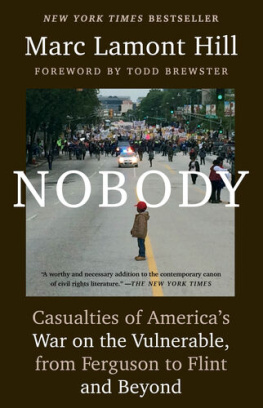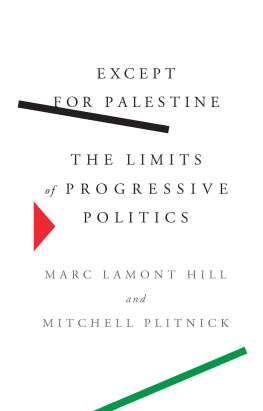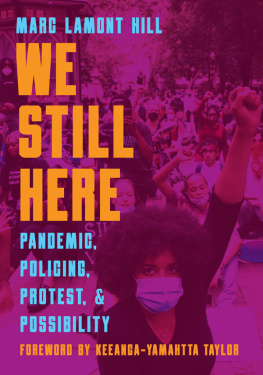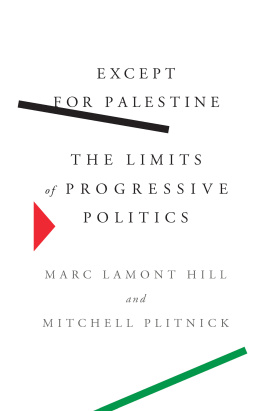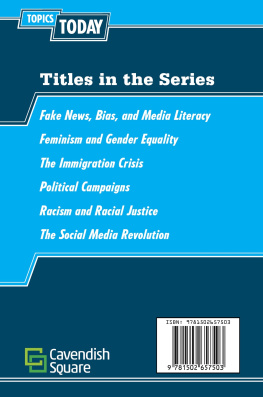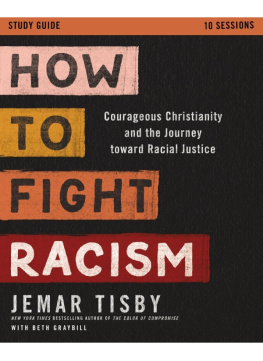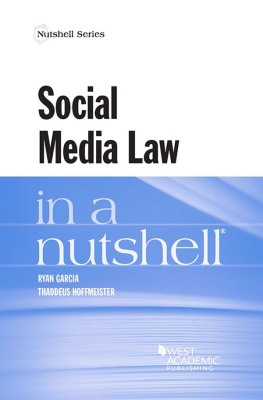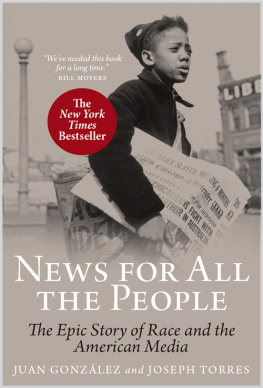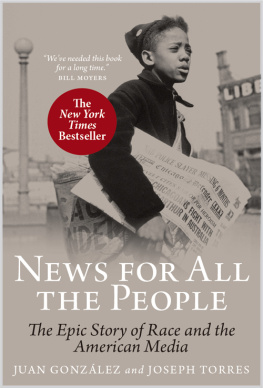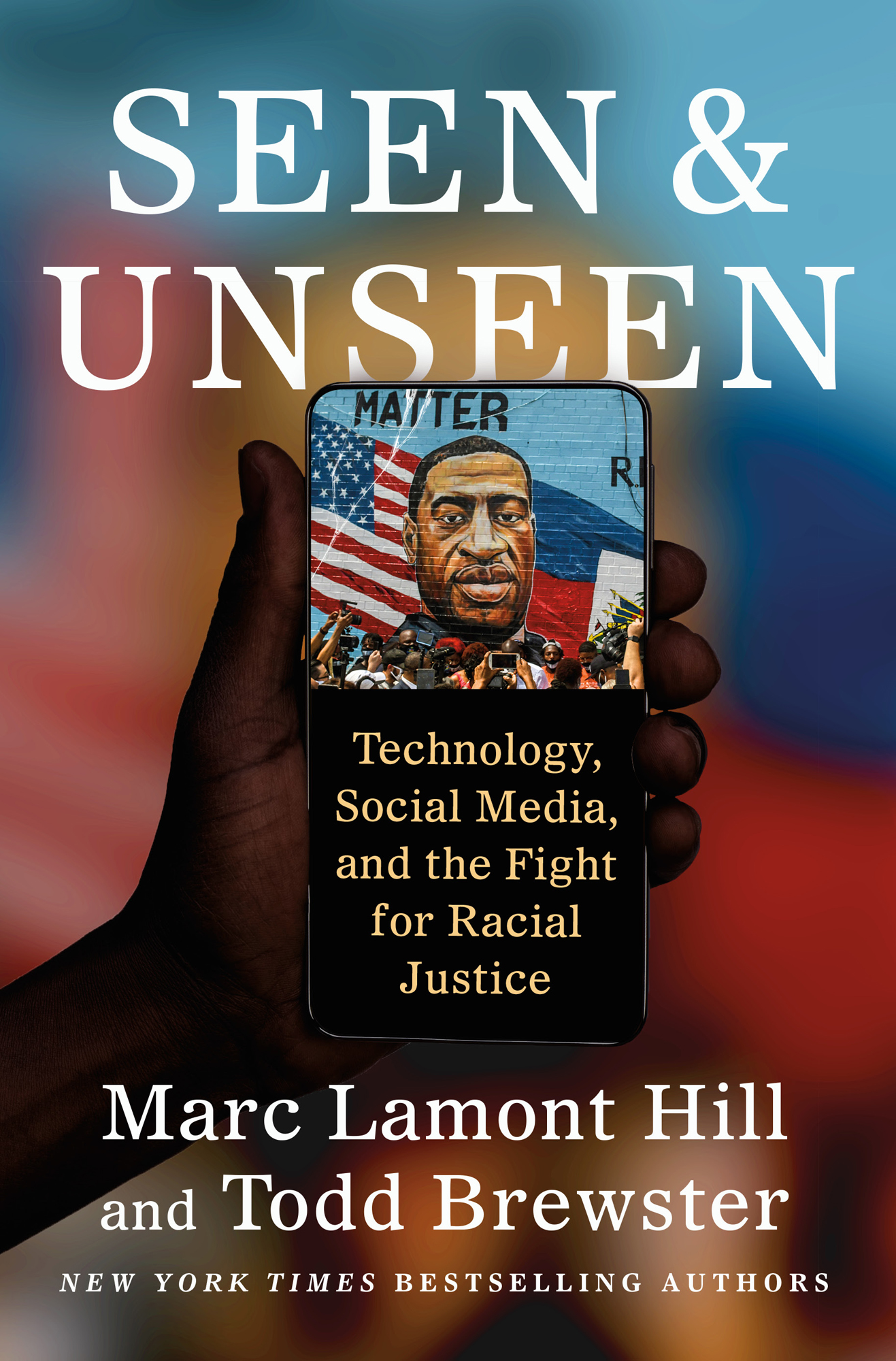Contents
Guide
Seen and Unseen
Technology, Social Media, and the Fight for Racial Justice
Marc Lamont Hill and Todd Brewster
New York Times Bestselling Authors
To the memory of all those throughout American history who have suffered at the hands of vigilante and police violence. May seeing bring learning, and learning bring justice.
Love forces, at last, this humility: you cannot love if you cannot be loved, you cannot see if you cannot be seen.
JAMES BALDWIN
Introduction
S ince the end of the Civil War, America has been nagged by what was often called, as if describing a problem child, the Negro question. And for the great majority of that time the answer was one delivered by white journalists and white academics, white politicians and white policymakers, white pastors and white businessmen, white novelists and white scientists. Some of the most commanding contributions to the discussion have come from practitioners of the communications profession, and as the tools of communication became more powerful, so, too, did their messages. Indeed, it would be no exaggeration to say that the storytelling of novelists, filmmakers, journalists, and academics was as crucialperhaps even more crucialto establishing Jim Crow and its era of cruel servitude as was the work of segregationist lawmakers.
It was white people who owned the cameras and white people who made the movies, white people who ran the publishing companies, edited the newspapers, and funded the research, and white people who wove tales that sentimentalized the Confederacy, adjusted the lessons of the Civil War to be more favorable to the South, and argued that Reconstruction failed because Black people, inferior by their very nature, had nonetheless been entrusted with equality and authority at the expense of the interests and feelings of the defeated white majority. In short, Negroes were what white people saw them to be, wished them to be, and even forced them to be. How do you answer the Negro question? Let white people do it for you.
Even those who counted themselves as sympathetic to the plight of Black America tended to offer pity more than understanding, to see the problem of race as secondary and not systemic, as something to be repaired rather than reenvisioned. Responding in 1890 to criticism that the First Mohonk Conference on the Negro Question in upstate New York had included only white participants, the progressive theologian Lyman Abbott wrote that the presence of the negro in discussions about his vices and virtues, his capacities and incapacities, his ignorance and knowledge would only inhibit free discussion. A patient, he explained, is not invited to the consultation of the doctors on his case.
Such misguided paternalism lasted well into the twentieth century and, indeed, persists today. Noting the entrenched nature of racism in our public institutions, the psychoanalyst and author Joel Kovel, writing in 1970, coined the term metaracists for those who, while not overtly racist in their behavior, acquiesce in the larger cultural order which continues the work of racism. Much more recently, Betsy Hodges, the former mayor of Minneapolis, responding to the police killing of George Floyd, challenged American liberals for resisting systemic solutions in favor of the illusions of change, of things that make us feel better but fundamentally change little for communities, including the hoarding of advantage by mostly white neighborhoods.
But early in the twenty-first century, Americans find themselves living at an inflexion point. Thanks to the rapid democratization of technology that is so characteristic of our time, the messages delivered by our communication tools are no longer exclusively, or even predominantly, the work of the white and the powerful. They no longer represent only the voices of those who see Black lives as inferior to white lives or, at the very least, dependent on white largesse. They are, with different degrees of influence and power, the varied voices of all of us.
This is a book about that change, about both the good and the bad, about what social media and the ubiquity of video evidence of racism is doing to us as a society. It looks back at the history of race and technology to discover how photography and the movies were used to shape American race relations, furthering or hindering racial justice, and it looks forward to address the challenges that our new era, empowered by fresh democratic tools, poses to racial justice. To address all of this, we chose a handful of scenes of racial confrontation and violence that have taken place over the past few years, scenes that were captured on cell phone cameras, on law enforcement bodycams, on surveillance video, or on the camcorders of marauding self-sponsored videographers and then distributed across the internet and on social media. There, they were chopped into short memes, framed into social media messages, utilized as recruitment pitches, played backward and forward, sped up and slowed down, and otherwise dissected for hidden meanings.
One result has been that a more realistic, unfiltered picture of Black life is emerging. Long-held claims of racially motivated police and vigilante violence now have the evidence that they formerly lacked. Calls to action no longer need to rely solely upon the persuasiveness of the speaker, for the visuals precede them, motivating people who might otherwise not have believed that a white police officer attempting to arrest a Black man for the crime of passing a counterfeit twenty-dollar bill would subdue him with a knee on the mans neck until the life was squeezed out of him, breath by breath.
This alone is no small achievement, for it is invisibility, as Isabel Wilkerson has written, that has long given systemic racism its power and longevity. But the changes brought by our new technologies are not only in what we can now witness; they are also in what we can now do. Large social movements have always been at the mercy of the technology of their times, and the structure, method, language, and goals of those movements were determined in part by the nature of that technology. But todays media is infinitely more pliable. Events can be livestreamed across the world. Videos can be shot and posted on YouTube or Instagram or Facebook, where they can be watched today, tomorrow, a year from now, or ten years from now, and shared with neighbors and coworkers, with old friends from high school and strangers you just friended because, well, Facebook thought you should. Comments can be collected, disseminated, and then re-disseminated ad infinitum. People can be mobilized within minutes and directed in real time from their phones, with more people connected in more ways than during any other time in human history. The break with the past is nothing short of stunning. The thing about King or Ella Baker is that they could not just wake up and sit at the breakfast table and talk to a million people, activist DeRay Mckesson said in an interview with the magazine Wired. The tools that we have to organize and to resist are fundamentally different than anything thats existed before in black struggle.
In the late nineteenth century, photography helped expose the barbarity of lynching at the same time that the crusading Black journalist Ida B. Wells was uncovering the lies that condemned Black men (and some women) to the fate of the rope. By the mid twentieth century, the work of sympathetic photojournalists, both white and Black, helped drive the Civil Rights Movement, creating images of despair and injustice that seared the popular consciousnesspictures that, to this day, stand as essential iconography of Americas progressive history. Marching in Montgomery in 1965, Martin Luther King Jr. declared that the movement would no longer let white men use clubs on us in the dark corners. We are going to make them do it in the glaring light of television.

